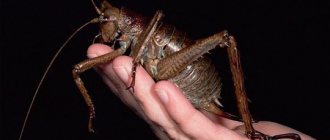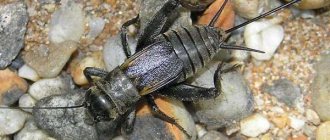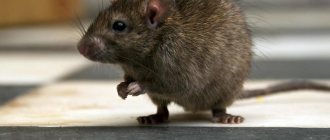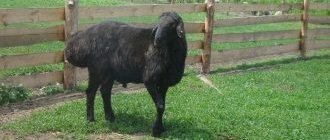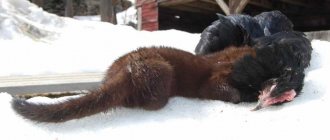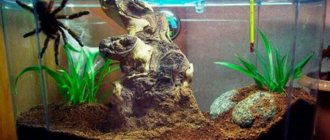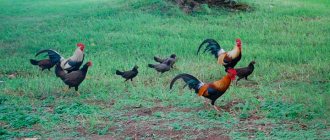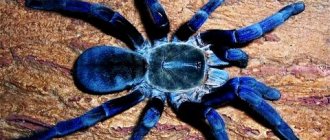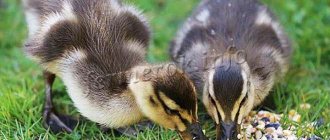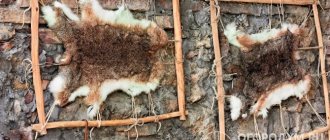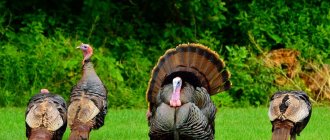What does a ferret look like: photo of the animal
The steppe ferret is the largest among its peers. This is a predator found throughout almost the entire territory of the Far East, Europe, Central Asia and Kazakhstan. Not everyone can adapt to different climatic conditions as well as this animal. Some subspecies of the steppe ferret are listed in the Red Book.
The body length of the predator can reach 56 cm, and body weight 2 kg. The ferret's fur is brown. It is darker in color on the abdomen, paws and tip of the tail. Dark spots are clearly visible on the face. The steppe ferret moves by jumping.
The color of ferrets in different regions and at different times of the year may vary. Meanwhile, all predators of this species have something in common in the color of their skin. Many people are interested in what a ferret looks like. Color description:
- The guard hairs are dark at the ends and light at the base.
- The down is light.
- The white muzzle has a black mask.
- The belly, paws and tip of the tail are almost black.
What does the steppe ferret eat?
The diet of the steppe ferret is varied. In the warm season, it feasts on gophers, frogs, pikas, mouse-like rodents and invertebrates, and sometimes eats snakes. If a ferret's home is located near a pond, then it will happily eat water voles.
Having well-developed night vision and a remarkable sense of smell, it goes hunting at night. Strong front paws help to quickly catch up with the prey, and with its powerful claws it can easily dig the prey out of the hole. After the meal, the ferret can still occupy the victims' hole. It feeds exclusively on fresh prey; only prolonged periods of starvation or illness will force it to eat a dead animal.
The steppe ferret has enemies. The danger for him comes from eagles, foxes, wolves and, of course, dogs. If the animal is caught in the open, it is unlikely to be able to escape.
What traps to use
To catch ferrets, traps of different models are used. Given the nocturnal lifestyle of the predator, the trap is set in the evening. Using traps, they ensure the safety of chickens: they place the traps in a place inaccessible to the birds.
After installation, traps must be treated with a special compound that repels the human odor that frightens predators.
They use a product sold in specialized stores, manure (the trap is coated with the substance), slaked lime (applied with a brush). If the location of the ferret's hole is known, a trap is placed nearby.
To catch a predator, they use the so-called. trap No. 1. The device's guard is made especially sensitive. The bait is a bird killed by a polecat, and the animal's blood is poured into the trap.
A rat trap that is strong enough to hold a large rodent is a suitable trap for a ferret. The device is additionally weighted by attaching it to a large board to make the trap stable.
The ferret overturns a light rat trap, vigorously escaping. The freed predator, remembering the dangerous trap, always bypasses the rat traps.
Forest ferret: description
Black or dark ferrets are naturally crossed, and the result is predators of various colors. An adult ferret looks like its relatives, only on the back it has a black-brown color. The rest of the body is almost black. Sometimes you can find red or white animals.
Forest ferrets have very long, sharp claws. The elongated body of the male reaches a length of up to 50 cm, and the tail - up to 17 cm. The body weight of the male reaches 1,500 g. The female is much smaller, her weight often does not exceed 800 g, and her body length is approximately 40 cm. The tail of females is naturally shorter than that of the male.
The face mask is the calling card of the ferret. Externally, it differs from other species. The mask has a characteristic contrasting ornament, with it the forest polecat looks like a decorative animal.
Conditions in the house
If you decide to have a pet, then a ferret would be a good choice. The domestic variety of the animal is characterized by an average length of about 50 cm, including a tail, which can reach 12-15 cm. The body weight of the animal varies from 700 g to 2 kg. Life expectancy in captivity reaches 5-7, in some cases 10 years, although in the wild it is no more than 3-4 years.
Nature and features of the content
Ideally, domestic ferrets can be kept freely indoors with the ability to move around the apartment or house. This option will help provide the animal with the necessary level of physical activity.
However, we should not forget that ferrets are very active and can begin to play with household utensils and various objects. Therefore, you can purchase a cage for keeping, which will become your personal territory and a place to relax. A house or hammock should be provided in the cage. For one animal, the cage dimensions should be 60x50x90 cm.
Important! Domestic ferrets sleep a lot of time. Their sleep is deep and long - 14-18 hours a day. That is why it is advisable to equip the cage with comfortable hammocks or bedding.
This is a fairly smart animal that can easily learn. He quickly gets used to people, becoming tame. In some cases, ferrets can follow the simplest commands of the owner. They quickly get used to the tray, although they often find another place for the toilet, where they should put the container. They can be taken for walks with a leash-collar.
The presence of a musky smell with honey notes may create some difficulties for the owner. The sebaceous glands after sterilization and castration will not produce an enzyme that enhances the odor. Therefore, such animals do not smell too strongly. At the same time, the smell is inherent in all individuals. Its intensity is determined by the characteristics of maintenance, care, and feeding. A strong and not very pleasant odor occurs due to:
- the beginning of the mating period;
- the use of low-quality food or saturated with odors;
- non-compliance with hygiene rules;
- excessively frequent bathing and the use of unnatural hygiene products;
- illnesses and stress.
Ferrets are curious and will try to get into every crack in the house. At the same time, they often swallow small objects, which provokes complete or partial obstruction of the gastrointestinal tract. The animals dig up the soil in flower pots.
Interaction with other pets
Before buying a ferret, you need to make sure you are ready to create proper living conditions for the animal. The animals are active and restless. They will not be able to sit in a cage all the time; they will need additional space for walking.
Ferrets get along well with cats and calm, melancholy breeds of dogs. However, they will not be able to live in the same territory with birds, rodents, reptiles, and dogs with hunting instincts. If a rat, hamster, lizard, chinchilla, rabbit or parrot is seen as potential prey, being around a dog may be perceived as dangerous.
Ferrets should not be expected to play with other species. However, with proper upbringing of pets, they can, in many cases, coexist quite peacefully. In addition, these are one of the few animals that can live not only alone, but also together with other members of their family.
Vaccinations and sterilization
Domestic ferrets are routinely vaccinated against a number of standard ailments. This refers to canine distemper, rabies, and leptospirosis. It is important to take into account the characteristics of the animals - they often exhibit an allergic reaction to the vaccine. Therefore, it is important to protect it with an antihistamine before the vaccination process. After vaccination, wait 30 minutes. to identify possible allergies.
When the owners of the animal have no plans to engage in breeding, the female can be subjected to sterilization surgery, and the male can be castrated. This will help get rid of the intense, specific aroma that becomes most noticeable during puberty. However, even neutered ferrets still have a musky odor on their fur. This property requires weekly bathing of the pet using shampoos and pastes with a degreasing effect.
Ferret and weasel - one family
The weasel, like the ferret, belongs to the weasel family. History is silent about why this small, bloodthirsty and ferocious predator was named so affectionately. Among its relatives, the weasel is the smallest predator.
Males grow to a maximum of 26 cm, and their weight is approximately 250 g. Females are much smaller: body length ranges from 11 to 22 cm, and weight from 30 to 100 g. Their tails also differ in size. In a male, the length of the tail can be approximately 8 cm, and in a female – 6.5 cm. The weasel’s method of movement is jumping up to 30 cm long.
Externally, the weasel looks like a ferret and has reddish-brown fur. Only on the neck and belly the fur is white. In the cold season, the dark color of the fur changes to white with long pile. Thanks to this white color, the weasel becomes invisible in the snow.
The weasel's sharp claws on strong short legs make it possible to excellently climb trees. With her claws she can very quickly tear apart mouse holes.
Weasels do not have a permanent shelter. She rests in secluded places. It can be:
- Thickets of bushes.
- Spaces among the roots.
- Rock crevices.
Weasels are also found in the tundra and steppe. In the article you can see what a ferret and weasel look like; the photos show an already mature animal.
The weasel chooses a place to live where there is a lot of food. The basis of nutrition is voles. Although she can make changes to her diet. Treat yourself to bird eggs, lizards, fish, large rodents, rabbits, snakes and even insects.
Manners of affection
The weasel is the ferret's closest relative. In the old days, there was a belief that meeting a beautiful predator would bring bad luck. The weasel is not at all afraid of people; it can easily steal something from food, and do it suddenly and completely unnoticed by a person.
At the same time, there was another opinion, completely opposite to the first. Its meaning was that affection can bring good luck and happiness. The weasel brings great benefit to humans because in a short time it can destroy a large number of rodents that cause significant harm to agriculture. The weasel looks like a ferret and its manners are no different from representatives of this species.
The weasel tries to go hunting at night. Its long, stately body makes it possible to easily penetrate mouse holes, and its sharp claws easily deal with prey. During the daytime, the weasel is also active. During the day, she runs about a kilometer in search of food. In winter, the weasel moves under thick snow. Rodents have no escape from it, neither underground nor on the ground.
The caring weasel loves to stockpile supplies in case of famine; the animal stores mouse carcasses in a hidden place. The area where the weasel hunts depends on the number of inhabitants. If the “food” runs around in sufficient quantities, the weasel remains in this place for a long time. As soon as there is less prey, it moves to other places.
This tiny predator treats people without fear, but also without friendliness; in fact, it is not tamed.
Homemade traps
Some farmers catch animals with homemade traps.
The simplest version of the device is a bucket or box with a support. The bait is a piece of meat containing a large volume of blood.
The support is positioned so that the animal knocks it down by pulling the bait. The downside of the trap is the need for constant checking, otherwise the ferret will have time to get out. The caught animal must be removed quickly.
More reliable is a cage that has a vertically lowering door held open by a rope, which is released as soon as the bait is touched. To attract the animal, meat is taken with copious amounts of blood.
Care should be taken when removing a captured ferret. The teeth of polecats, martens, and weasels are very sharp, easily bite through the skin, and damage joints.
A wild animal may be infected with the rabies virus. Thick, thick mittens are put on your hands, and thick leather gloves underneath. It is convenient to use a lasso when getting a predator out of a trap.
You should not try to tear off a ferret that has grabbed your hand: the injury will be worse. The animal's nose is pinched to loosen its grip, then a wooden stick is inserted between the jaws and the mouth is opened.
A cage with a vertically lowering door is more reliable.
After being bitten, you should immediately seek medical help and get vaccinated against rabies. You should try to take your ferret to a veterinary laboratory for diagnosis.
What to do with the captured animal is up to the poultry farmer to decide. If possible, you can act humanely: release the ferret far into the forest, from where the animal cannot return. When long-distance release is not possible, the pest must be destroyed. The skin of a healthy animal is used.
Some farmers know how to catch polecats with a rope lasso. The method is complex and requires experience. If the hunter's skill is insufficient, the animal will easily escape the noose and become more careful.
Important! Experts do not recommend using homemade products for catching polecats, but recommend professional devices that provide guaranteed results.
Ferret instead of a cat
The domesticated form of the wild forest ferret is called the ferret or furo. About 800 years ago, the first domestic ferrets appeared. They lived only with people of the upper class.
Today, the albino ferret is becoming the most popular among breeders. This is a descendant of black forest polecats, and it is he who is called furo. He has a snow-white coat and differs from his relatives in his red eyes. What does a ferret look like? The photo in the article shows furo in all its glory.
Furos kept at home are quite large: body length can reach 50 cm, weight 2 kg. The lifespan of a domestic ferret is significantly longer than that of its wild counterparts. When organizing feeding a ferret, you need to take into account that it is a predator. The diet should include chicken, duck, and fish. They will not refuse cod, haddock and flounder.
The forest ferret is also called the common or dark ferret. As noted above, the ferret is a real predator. These sneaks take great pleasure in eating rats and mice, and in addition dangerous vipers.
It has been established that snake bites do not harm animals in any way. In order to eat nourishingly and well, the ferret is forced to hunt for a living, showing cunning, endurance and dexterity.
Folk methods of struggle
Important! Folk measures to combat polecats, martens, and weasels are sometimes used by small farm owners, but there is no official confirmation of the effectiveness of such protection.
It is recommended to lubricate the surface of the walls of the building with tar. The substance should repel predators, but not all animals are afraid of the tar smell. If the foundation of the building is not sufficiently strengthened, the ferret will dig, bypassing the area with tar.
There is an opinion that goat skin drives away ferrets with its smell. The smell of a goat is said to frighten all members of the mustelidae family. It is difficult to get rid of the animal this way. The method is more correctly classified as preventive measures for a well-insulated poultry house.
The folk method is to catch an animal using a strictly heavy coat or jacket. Special dexterity is required from a person. The animal must be quickly covered and wrapped in a coat.
The ferret should be pulled out by the withers, after putting on gloves and mittens.
It is unacceptable to involve children in this matter. Catching a ferret using a jacket or coat is dangerous and is not advisable. Wild animals carry many diseases, so it is advisable to avoid contact.
Black-footed ferret
This is the only species native to North America. The steppes and hills of North America are its habitat. The black-footed ferret looks like a prairie and forest ferret. Small differences are observed only in color. The predator lives in abandoned prairie dog burrows.
The black-footed ferret has a long body with dark brown fur. The animal has dark fur on its back, a black tip on its tail, and its legs are also black. The black mask on the face is located in the eye area. The nose is black, and the muzzle, forehead and neck are white. The animal's ears are large and rounded, and its paws are thick and short. The weight of males reaches one kilogram, and females up to 850 g. The body length of males is 38-60 cm.
In captivity, the black-footed ferret can live up to 12 years.
Predator Information
The ferret belongs to the genus of mammals of the mustelidae family. In Latin, its name sounds like furonem, which means “thief.”
There are several types of this predator:
- forest;
- steppe;
- blackfoot.
The color of ferrets can be different, usually their fur is brown-black, the tail, head and paws are darker. Light coats of fur are observed on the sides and belly of the predator. There are cases when the color of the animal is red or white. It is typical for a predator to have a slender, elongated body, the length of which is 30–50 cm. Paws with sharp claws, with the help of which animals dig deep holes, defend themselves and attack. The weight of a ferret is 1.5–2 kg. Life expectancy is 6–12 years.
These animals have an aggressive character; they get into fights with rivals even larger than themselves. During the daytime, the predator sleeps and hunts at night. And only when he is very hungry can he start hunting during the day. The predator comes for its prey at night: it quietly creeps up to the victim, attacks it with aggression, and then strangles it with its paws.
Did you know? The most favorite food for a ferret is chickens, but at the same time, he will not refuse to feast on other domestic animals.
What do black-footed ferrets like to eat?
These cute predators love to eat prairie dogs. But it also happens that they have to eat gophers and mice. A ferret needs 50-70 g of meat per day. These predators do not store food.
This ferret prefers a solitary existence, with the exception of the breeding season.
The ferret (Mustela putorius) lives in Eurasia. The so-called African ferret is apparently an albino form of the black one. It freely interbreeds with the forest ferret and is not an independent zoological species. The black ferret is found in almost all of Western Europe, including England, and in a large territory of the European part of Russia, except for North Karelia, north-east of Crimea, the Caucasus, and the Lower Volga region. Over the past decades, the black ferret has been intensively spreading to the north - in Finland. Black ferrets do not exceed 48 cm in length, 17 cm in tail, and 1.5 kg in weight. The black ferret's main diet consists of voles and mice. In addition, the black ferret often catches frogs, toads, partly wild and domestic birds, and sometimes rabbits.
The weasel and ferret are some of the most confusing animals if they don't look closely. It appears to be a cousin of the other one, which has long tubular bodies, albeit in different dimensions. They belong to the scientific parent name Mustelidae. However, there are significant differences between these types, as this article elaborates as follows.
What is Ferret?
As noted above, the ferret falls under the ferret division Mustelidae. The ferret has a longer body with a shorter tail compared to the weasel. Because of their communication, ferrets have been domesticated for over 2,000 years. They can keep rats, mice and snakes under control in the household, which is why they are liked as pets. Additionally, ferrets can be found in groups, unlike weasels.
Ferrets are crepuscular and nocturnal animals and can hunt their prey to drink blood. Typically, the ferret has a black brown coat with some white additions. Ferrets are generally larger than weasels but have a shorter tail of about 5 inches, while the tail tail is about 13 inches long. Ferrets can grow up to 24 inches, while weasels can grow from 5 to 18 inches.
